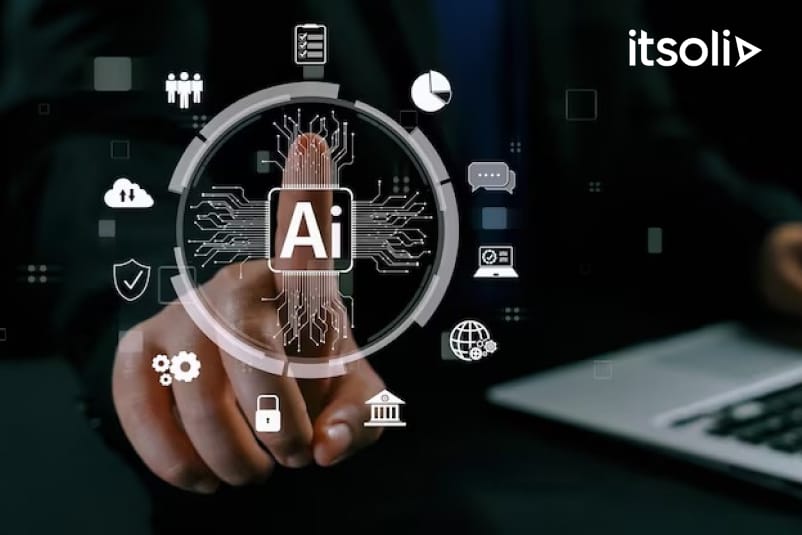
From Integration to Intelligence: Modernizing Legacy Systems with Custom AI
October 18, 2025
Enterprise legacy systems were built for stability. They are robust, proven, and often mission-critical. But in today’s AI-first landscape, legacy systems alone are not enough. Modernizing them does not always mean replacing them. The smarter path for many enterprises is to augment legacy with intelligence, not overhaul it entirely. This article explores how organizations can strategically layer AI into their legacy stacks, unlocking new value while preserving the systems they already trust.
The Legacy Challenge Is Real — and Expensive
Global enterprises spend millions maintaining ERP, CRM, and SCM systems that are 10, 15, or even 20 years old. These systems form the backbone of operations, handling everything from supply chain logistics to customer billing. But they were never designed to learn, adapt, or optimize. They follow rules — they do not question them. That rigidity becomes a bottleneck when agility, prediction, and personalization are strategic imperatives.
Yet replacing them entirely is often not viable:
- Migration is costly and disruptive
- Data models are tightly coupled and hard to replicate
- Staff are trained on existing interfaces
- Custom workflows cannot be easily ported
This is where AI augmentation comes in.
The Shift From Replacement to Reinforcement
Instead of full-scale rip-and-replace, forward-thinking CIOs are embedding AI in targeted layers across their legacy systems. The aim is not to replace functionality but to make existing functionality smarter. This AI-on-top approach improves decision quality, reduces manual overhead, and creates new levers for innovation — all while keeping the core systems untouched.
Key reinforcement layers include:
- Data Layer Augmentation: Wrapping legacy databases with AI-driven enrichment and anomaly detection
- Process Layer Automation: Applying NLP and ML to automate decisions traditionally handled by human operators
- Interface Layer Intelligence: Adding chatbots, natural language interfaces, and predictive widgets to legacy UIs
- Reporting Layer Smarts: Moving from static BI to proactive insight delivery based on machine learning
These are not cosmetic upgrades — they reshape how legacy systems deliver value.
Real-World Use Cases
Let us look at some industry scenarios where AI augmentation is actively modernizing legacy systems.
- Insurance Claims Processing:
A large insurer integrated a custom NLP model on top of its legacy claims system. The model classifies incoming claim documents, extracts relevant information, and pre-fills the claim form. Manual processing time dropped by 70 percent — without changing the core claims platform. - Banking Risk Models:
An international bank built AI risk scoring modules to sit alongside their Basel-driven credit assessment engine. These models used alternative data and real-time behavioral inputs, significantly enhancing decision accuracy in unsecured lending. - Manufacturing ERP Optimization:
A discrete manufacturer added a demand forecasting model to its SAP ERP. The model adjusted procurement parameters dynamically, reducing stockouts and improving production planning accuracy.
These cases show a pattern: value without disruption.
Strategic Considerations for Enterprises
If you are planning to modernize through AI augmentation, consider the following:
- Target High-Impact Zones First
Do not aim for complete coverage from the start. Identify specific business pain points where AI can deliver fast ROI — fraud detection, lead scoring, exception handling, etc. - Avoid Black Box Integrations
Enterprise stakeholders need transparency. Models should provide clear confidence scores, decision rationale, and auditable logs. - Create a Decoupled AI Layer
Your AI modules should not be embedded deep into the legacy system. Use APIs and service layers to keep them modular, testable, and independently scalable. - Align With Governance
Even if the legacy system is not AI-native, your new intelligence layer should comply with enterprise standards — especially in regulated industries. - Plan for Feedback Loops
Continuous learning is what sets AI apart. Design feedback mechanisms so that your models evolve with real-world usage and changing conditions.
Tools and Platforms That Help
Enterprises do not need to build everything from scratch. Several platforms make it easier to deploy AI in legacy environments:
- Azure Cognitive Services: Ideal for layering pre-trained vision, speech, and language APIs on legacy data
- Amazon SageMaker: Helps build and deploy custom ML models as microservices
- Google Cloud Vertex AI: Supports full MLOps pipelines with integration-friendly endpoints
- Robotic Process Automation (RPA) Tools: Like UiPath or Automation Anywhere, which integrate easily with legacy UI flows
The key is to ensure your AI stack complements — not complicates — your existing tech architecture.
The Human Element
Modernizing legacy systems is not only a tech challenge — it is a people challenge. Many operators and managers are deeply comfortable with the old systems. Introducing AI into their workflows without change management leads to friction and low adoption.
Success requires:
- Clear communication of AI goals and boundaries
- Training programs that show how AI supports (not replaces) users
- Feedback loops that capture frontline insights into model performance
- A champion network inside each department to drive local adoption
The future of AI in legacy environments is collaborative, not adversarial.
ROI Without the Risk
The AI-augmented approach delivers a strong ROI profile:
- Low disruption (compared to replatforming)
- Faster time-to-value
- More flexibility to pivot or replace only specific layers
- Modular deployment aligned to business readiness
This approach also creates a smoother path to broader AI maturity. Once confidence builds around these smaller wins, organizations are more willing to fund deeper AI transformation efforts.
AI Augmentation Is the Future of Legacy
Enterprise tech leaders are realizing they do not need to replace the old to get the benefits of the new. By strategically layering AI capabilities on top of legacy systems, they unlock untapped value while protecting operational continuity. This is not just a temporary fix — it is a scalable strategy.
Smart enterprises are building AI bridges, not AI replacements.

© 2025 ITSoli

